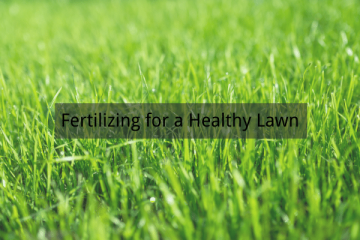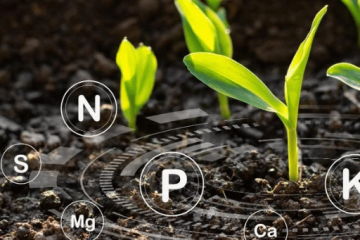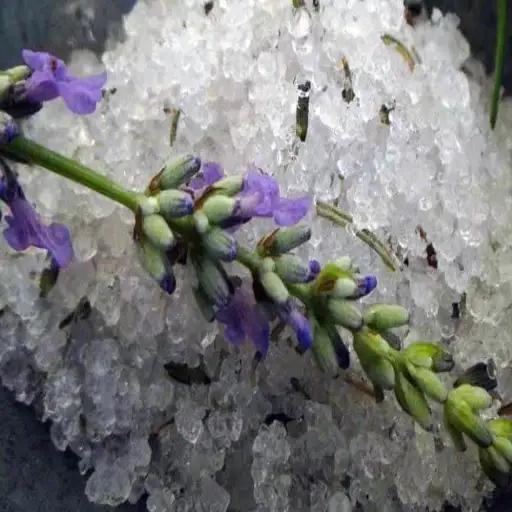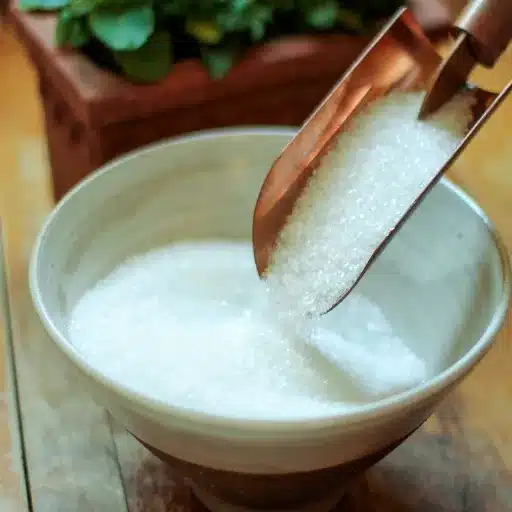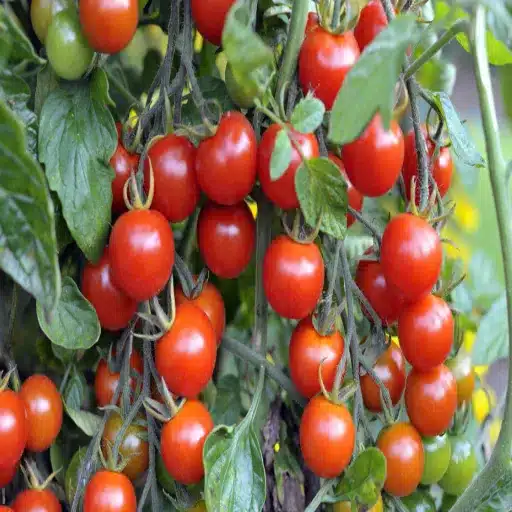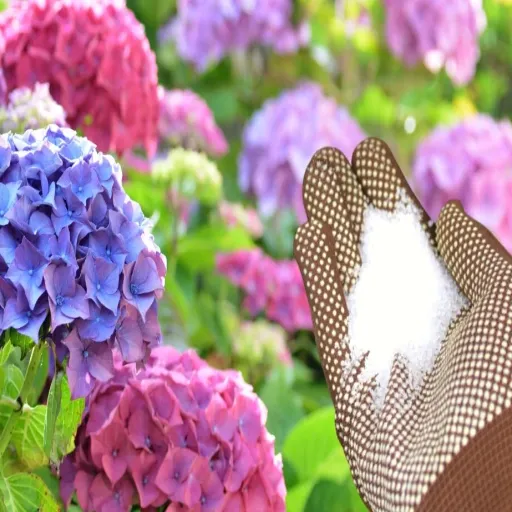When it comes to enhancing plant growth and health, gardeners often seek natural solutions that are both effective and environmentally friendly. Two such options that have garnered attention are Epsom salt and lavender water. This article dives into the science behind these popular gardening aids, examining how they work, their potential benefits, and the best practices for using them in your garden. Whether you’re a seasoned gardener or a novice exploring eco-friendly methods, this guide will provide you with valuable insights to make informed decisions for your plants.
How Does Epsom Salt Affect Plant Growth?
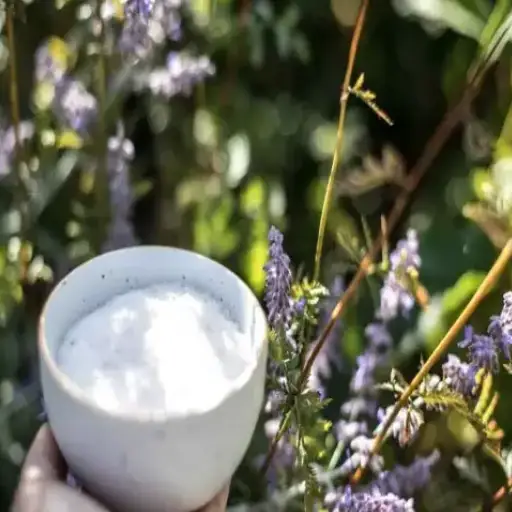
What are the benefits of using epsom salt on plants?
Epsom salt, or magnesium sulfate, is an inexpensive source of magnesium that supports plant growth. Magnesium, being a part of chlorophyll, is important for photosynthesis since it allows plants to harness energy from the sun more efficiently. C sulfate aids in the formation of important enzymes and proteins necessary for growth.
Studies demonstrate that Epsom salt helps alleviate plant magnesium deficiency, which manifests in yellowing leaves and stunted growth. Applying Epsom salt to soil augments nutrient absorption, particularly in tandem with nutrient-rich fertilizers. This is especially important for crops such as tomatoes, peppers, and roses that have higher magnesium demands for optimal fruit production and blooming.
Used correctly using light spray application or soil incorporation, Epsom salts boost overall plant health and productivity. This comes with a caveat of having to conduct thorough soil testing to determine baseline nutrient levels. Excessive application could disrupt soil and plant health due to nutrient imbalance.
How does magnesium in epsom salt help plant growth?
Magnesium, which is an important ingredient in Epsom salt, constitutes a basic element of nutrition in plants due to its various functions in plant physiology. Plants use sunlight for photosynthesis, an energy-producing process that is indispensable for plant growth and development. To use sunlight efficiently, plants have a molecule called chlorophyll, and magnesium is at the heart of it. Moreover, magnesium assists in the movement of phosphorus and other elements within the cells of the plant tissues, thus aiding in the formation of flowers, fruits, and seeds.
Evidence suggests interveinal chlorosis as a magnesium deficiency symptom (yellowing of the tissue between the veins, leaving the veins green). Such deficiencies are harmful to crops like tomato, pepper and rose, which are magnesium hungry plants. Proper application of Epsom salt serves to correct the magnesium deficiency. Moreover, it plays a catalytic role in the metabolism of plant life by assisting in the activation of the enzymes essential to the systems of the plants.
Differs with the crop and the characteristics of the soil, but in magnesium-deficient soils, it has shown to improve photosynthetic activity and with that the yield potential, beyond the tested targets, Epsom salt’s specific application based on soil tests aids in boosting efficiency.
Are there any risks of overusing epsom salt on your plants?
Although the application of Epsom salt (magnesium sulfate) helps mitigate magnesium deficiencies, its excessive usage can hinder plant productivity along soil health. Degraded soil health alongside diminished plant productivity is primarily brought about due to undernourished soils, which is a situation that can arise when excessive Epsom salt is used. Plants also require an appropriate balance between magnesium, potassium, and calcium, and without proper balance, stunted plant growth, along with poor development of its flowers and fruits, is inevitable.
The negligent use of Epsome salt also leads to an increase in salt composition in the soil, the phenomenon is termed as soil toxicity. Salt toxicity adversely affects soil drought-prone areas as it tends to increase the osmotic stress, thus making water absorption even more difficult. Furthermore, suffering the brunt of extremely high magnesium levels within the soil can lead to pausing the aerobic activity alongside root growth. These factors collectively contribute to poor and stunted plant growth and extremely dense soil structure.
The overuse of Epsom salt has downstream implications from an environmental point of view. Eutrophication, which is the excessive growth of algae in water bodies due to infusing excessive nutrients, can result from the additional magnesium and sulfate ions that may leach out from the soil during rainfall or irrigation and get deposited into water systems. As a means to safeguard the environment, Epsom salt or magnesium sulfate should be applied according to a finely calibrated dosage using cellphone soil testing and crop requirement methods. Regular monitoring of the soil can ensure that the nutrient balance is optimal, making it possible for Epsom salt to be implemented as a sustainable agricultural input.
Is Mixing Lavender with Epsom Salt Safe for Plants?
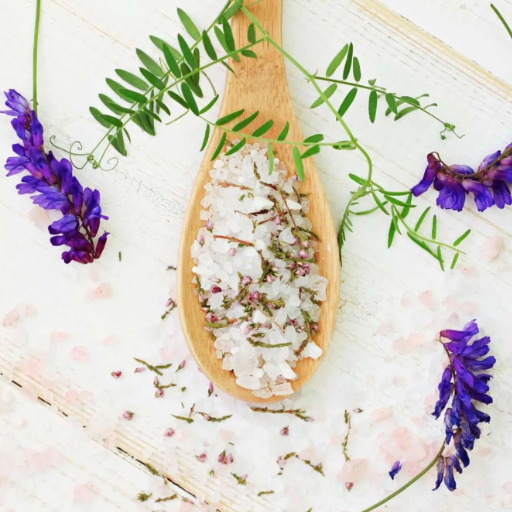
What are the effects of essential oils like lavender on plants?
The use of essential oils, particularly lavender, for natural pest control and plant growth stimulation is gaining popularity. Lavender oil has insectic and antifungal properties because of the linalool and linalyl acetate it contains. Relevant dilution can assist in protecting plants from common pests and fungal infections without the use of synthetic chemicals.
Essential oils, including lavender, in their undiluted state can cause phytotoxicity like leaf burn and stunted growth. The highly concentrated essential oils may inflict further damage when precise dilution and controlled application do not adhere to the relaxed guidelines of sensitive plant tissue. Studies indicate that a lower concentration of oil in water at a dilution of 0.5%-2%, or one to two drops of oil per liter, pose no harm to most plant species, proving under this condition. Moreover, lavender oil can be useful in integrated pest control for the monitoring of certain pests, such as aphids and mites, thus improving plant health when applied suitably.
In conclusion, while the potential advantages of lavender oil as a plant aid are appealing, the oil concentration, species of plants, surrounding environment, and other factors must be balanced to administer the aid and not defile the plant.
How much lavender should be mixed with epsom salt?
The value of lavender oil in Epsom salt differs depending on the intended outcome. For a typical purpose bath soak, the value is set to be 10-15 drops of lavender oil per one cup of Epsom salt. This value assures that the oil will evaporate completely when mixed with water and not remain trapped in the salt. Essential oils need a prop to disperse effectively, which helps explain why Epsom salt is both a carrier and supplier of magnesium sulfate that assists muscle and skin relaxation.
Some particular uses need to be tailored, such as in the case of stress relief or muscle recovery, altering the value a bit can improve the results. For example, combining two cups of epsom salt with lavender oil allows for more concentrated soaking, which is ideal for alleviating muscle soreness after exercise. Adding the oil to the salt and leveling it out properly helps avoid clumping. Also, measuring out 6-8 drops of lavender oil along with half a cup of Epsom salt aids in foot soaks and provides the calming effect needed.
Safety and quality must be thoroughly evaluated during preparation, especially concerning the use of pure lavender essential oil. Make certain that no high-quality lavender essential oil is tainted by synthetics. Before using lavender oil extensively, a patch test is a prerequisite to confirm that no skin sensitivity or allergy exists. Those who are pregnant or nursing and those with certain medical conditions should first seek guidance from a medical practitioner before adding bath oils. Observing the aforementioned steps allows for the desired therapeutic and aromatic efficacy arising from the mixture of lavender and Epsom salt.
Can lavender improve the soil quality in a vegetable garden?
Although lavender is primarily valued for its flowers and essential oils, recently, this hardy herb with drought-tolerance has gained attention for its aromatic and therapeutic value, as well as potential soil amenity. Lavender has several attributes that can positively impact a vegetable garden’s ecosystem. It has low nutrient requirements, making it ideal for diverse garden setups as a companion plant because it does not compete for resources with other crops. Additionally, lavender’s extensive root systems enable it to prevent erosion and enhance soil structure by loosening compacted soil over time.
An additional prominent benefit of lavender cultivation is its positive influence on biological pest control, which indirectly assists with soil quality. Replanting with lavender can also aid with attracting pollinators like bees and butterflies that help to increase crop yields through pollination. Lavender can positively impact soil health because the absence of chemical treatment helps preserve the balance of microorganisms in the soil. This ensures the soil’s microbial activity that is fundamental for nutrient cycling, soil health, and soil fertility are undisturbed.
Lavender also has numerous advantages in biological pest control that further help to improve soil quality. Lavender’s pungent oils help to repel common garden pests like aphids, moths, and whiteflies, which lessens the need for the use of chemical-laden pesticides. Lavender flowers and stems also aid in soil enrichment through organic matter. When spent lavenders are pruned or ‘mulched’, these lavender flowers and stems gradually return organic micronutrients to the soil as they decompose. This enhances soil fertility and moisture retention, thereby creating good conditions for vegetable plants to grow. Although lavender does not fix nitrogen to the same extent a legume does, the plant’s broad compatibility with various garden systems and its capable pest-suppressing qualities make it a beneficial addition to gardens concentrating on ecological and sustainable vegetable gardening.
How to Properly Use Epsom Salt and Lavender on Plants?
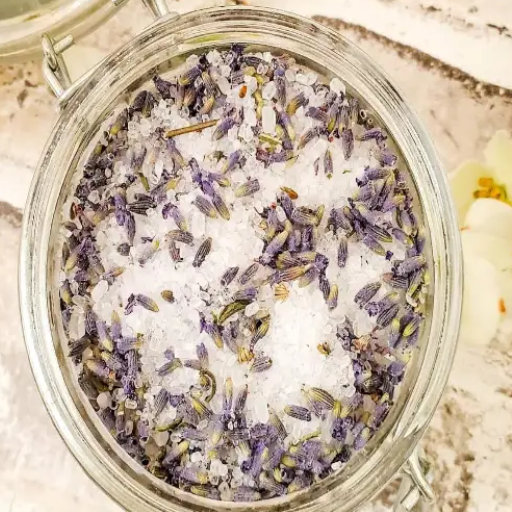
What is the correct way to apply epsom salt and lavender to plants?
The incorporation of Epsom salt (magnesium sulfate) in gardening, alongside lavender, needs careful planning to avoid damage and side effects while leveraging benefits. This practice does not only address magnesium and sulfur concerns but also tackles efficiency in chlorophyll production, which is critical for plant functioning. Epsom salt should be applied as follows: 1 tablespoon of the salt should be mixed in 1 gallon of water. The resulting solution can serve as a soil drench or foliar spray, based on the plant’s growth stage and condition. For certain vegetables, such as tomatoes and peppers that generally struggle with magnesium, foliar application once every two weeks gets the job done in terms of improved growth and enhanced yield.
Lavender serves a dual purpose within gardens by performing as both a companion plant and a pest repellent. Use it to best effect by creating borders with it or scattering it throughout vegetable beds. As a phytosebastes, lavender can repel dangerous pests like aphids, moths, and mosquitoes and also attract invaluable pollinators like bees and butterflies. Moreover, the pruned clippings from lavender can serve as mulch for vegetable gardens. These clippings should be dried first so that, once placed around the plants, they can form a balanced layer that withstands the growth of weeds, locks in moisture and pests while also slowly releasing fragrance.
The desired result will only be achieved with careful attention paid to both the frequency and quantity of application of lavender and Epsom salt. Using Epsom salt too much can lead to having a surplus of magnesium in the soil, which will unbalance essential nutrients like calcium and potassium. Concerning lavender, it is also tough but is vulnerable to being over planted or placed in hard to drain soils, which leads to rot and lessened growth. It is thus important that periodic soil tests are conducted alongside monitoring plant responses to adjust application methods according to the need. It is possible to achieve the balancing of the lavender and Epsom salt synergistic effects while cultivating conserving garden ecosystem that is sustainable and rich in biodiversity.
How many cups of epsom salt should be used in a garden bed?
The dosage of Epsom salt in a garden bed differs depending on the size of the flower bed, the particular plants growing in it, and the soil’s nutrient requirements. It is common practice, though, to recommend about 1 cup of Epsom salt for every 100 square feet of flower bed for most plants. It is best to apply it either by sprinkling the salt on the top layers of soil and mixing it within the top 6 inches of soil or dissolving it in water and applying it during watering for better salt distribution.
For flowering shrubs, fruit trees, or even vegetable plants, the quantity of Epsom salt can be further optimized. For instance, vegetable plants often respond positively to 1 to 2 tablespoons of Epsom salt placed around their base at the time of planting or mixed into the soil before sowing. In comparison, roses tend to respond well to half a cup of Epsom salt per bush, which is put in during the season to boost blossom production. In whatever manner the salt is applied, be sure to distribute it evenly and water adequately afterward so that the salt can be infused into the root zone while preventing salt buildup in the soil.
A soil test should be done first before applying the Epsom salt to check the levels of magnesium and sulfate in the soil. This makes sure that the right balance is tailored to the unique profile of the soil for maximum benefit while avoiding wastage. Garden supervisors should also strive to apply Epsom salt during spring and throughout summer at the start of strenuous periods of growth to support the season, then at intervals of 4 to 6 weeks to improve the results. Due to the magnesium and sulfur surplus Epsom salt carries, its use should be secondary in importance to a plan that centers around supplementing organic matter into the soil coupled with gentle fertilization, balancing pH, and maintaining a modern approach to soil management.
Can you create a bath for plants using lavender and epsom salt?
Certainly, you can make a plant health bath using lavender and Epsom salt, but it must be done carefully to maximize the health benefits for the plant without causing any harm. Yellowing leaves and stunted growth indicate a deficiency problem, which can be solved with Epsom salt due to its magnesium sulfate content. Dried blossoms or essential oils of lavender contain natural compounds that have mild antifungal and pest-repellent properties, making lavender an excellent addition for plant protection.
For this mixture, dissolve 1 to 2 tablespoons of Epsom salt in a gallon of water. Ensure thorough dissolution to avoid creating a harmful salt sink for plant roots. If preparing for lavender, add a few drops of lavender essential oil (approximately 3-5) or steep dried lavender in water to make an infusion, which can be strained and combined with the Epsom salt solution. This should be applied every month during the growing period, either as a light soil drench or foliar spray.
Increased magnesium sulfate concentration in the soil can be detrimental and increase the risk of having soil imbalance, therefore it is crucial to monitor the plant response before applying additional nutrients and to apply this mix quite sparingly. Integrating this approach into a comprehensive strategy that includes soil enhancement with controlled soil depletion will ensure ideal results for your plants.
What Types of Plants Benefit Most from Epsom Salt and Lavender?
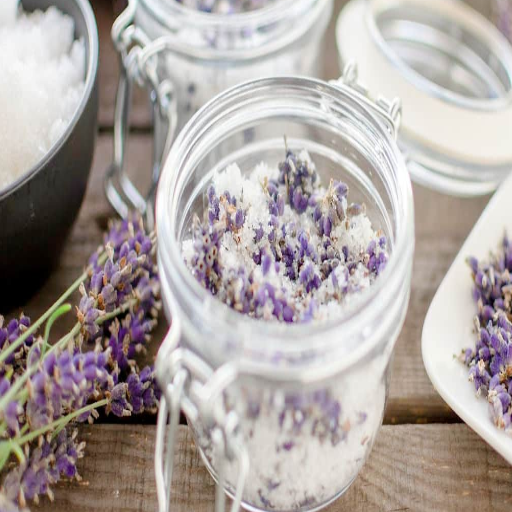
Are there specific plant species that thrive with epsom salt?
Magnesium sulfate, also known as epsom salt, is important in a plant’s nutrition regimen for supplying magnesium and sulfur, which enhances plant health. Magnesium aids in the formation of chlorophyll, the pigment needed for photosynthesis, enabling plants to harness the sun’s energy, while sulfur serves its purpose in catalyzing certain enzymes and metabolism of the plant alongside other functions. This supplement is most useful for plants during phosphorus or sulfur deficiency at certain stages in growth and development.
Fertilizing tactics employing Epsom salt tomatoes and peppers are prime examples of crops that benefit from Epsom salt use. These crops tend to require greater magnesium at the later stages of growth and during fruiting. The absence of magnesium in tomatoes and peppers causes the yellowing of leaves along the veins, which is termed interveinal chlorosis. With the help of a diluted Epsom salt solution as foliar spray or applied to the soil at the base of the plants, growers can get rid of these deficiencies and improve yield as well as fruit quality.
In the same manner, roses can take advantage of the supplemental use of Epsom salt. Both magnesium and chlorophyll are important for achieving new vibrancy in the new blooms. Roses do better when Epsom salt is applied around the base of the rose bushes or when incorporated into the soil during planting, stimulating the growth and productivity of flowers and spurring stronger growth. Moreover, magnesium strengthens rose roots, making them less susceptible to environmental stresses. In the right amounts, Epsom salt does the impossible and reduces plant sensitivity while optimizing growth for other species needing magnesium.
Can tree health be improved with lavender and epsom salt?
The application of Epsom salt, which contains magnesium sulfate, has been shown to improve trees by bridging the gaps disadvantageous to their health and developmental growth by improving the tree’s supply of needy nutrients. Trees use magnesium for the production of chlorophyll, which is very important for photosynthesis and the general well-being of the tree. Using Epsom salt enhances nutrient uptake, increases the strength of the cell walls, and results in increased growing leaves and fruits. On the other hand, it is very important to add the salt in the recommended proportion because too much magnesium can hinder the absorption of calcium and potassium.
Lavender, on the other hand, is a plant that worsens tree health directly, though it may help in some other way. Lavender contains strong-smelling substances that can naturally repel some pests and insects that destroy trees. In addition, it is well known that lavender is a good bee plant, which enables these pollinators to enhance the health of the environment around the trees. Though lavender is not scientifically proven in any way to aid in the growth of a tree or the uptake of the nutrients, it sure supports the world of nature around trees, which makes it a useful plant in agroforestry or orchards.
Achieving the best outcome still requires a thorough approach in soil management and fertilization strategies that considers the specific tree species being cultivated. Deficient nutrients need to be identified via proper soil testing so that the right dosage of supplements like Epsom salt can be added.
Is it good for spring planting in a vegetable garden?
Epsom salt, which is scientifically called magnesium sulfate, can be helpful when used strategically in vegetable gardens during spring planting. This is because magnesium and sulfur serve as vital constituents necessary for the healthy development of plants. Magnesium is important for the manufacturing of chlorophyll, which influences photosynthesis directly, while sulfur is critical for the formation of specific amino acids and enzymes.
Within certain crops like tomatoes and peppers, Epsom salt can help with magnesium scarcity issues that are common in nutrient-depleted soils. During spring planting, adding a moderate dose of Epsom salt—generally one to two tablespoons per gallon of water for foliar sprays or soil drenching—endonof will help improve nutrient uptake and plant health within the soil framework. That said, the application must stem from soil testing guidance to avert an imbalanced situation, as too much magnesium will inhibit the use of calcium, potassium, and other critical macronutrients.
In addition, for optimal results from Epsom salt, it should be used alongside an integrated soil management plan that includes organic matter incorporation as well as granular and targeted multi-nutrient composite fertilization based on the distinct needs of the vegetable cultivars cultivated.
What Are Alternative Uses for Epsom Salt in Gardening?

Are there other ways to use epsom salt besides direct application?
Epsom salt can be used in several unique or creative ways beyond the traditional direct application. One of the ways in which this can be accomplished is through its application as a foliar spray. For this purpose, Epsom salt is usually dissolved in water at a rate of one to two tablespoons for every gallon of water and can then be sprayed directly onto the leaves of plants. Compared with soil application, this method is more effective in overcoming deficiencies because it allows for faster absorption of magnesium and sulfur.
There are other applications, such as the use of Epsom salt in planting, which involves incorporating it with composting systems. The addition of small amounts of Epsom salt to compost piles enhances the overall quality of the compost by improving nutrient diversity and aiding in the decomposition process. Furthermore, it can be used to amend soil during the preparation of seedbeds by evenly mixing it with the top layer of soil before planting. This ensures even distribution of magnesium and sulfur, which support optimal seed germination and early plant growth.
Lastly, Epsom salt can help with pest control. When used in certain ratios, soaking the base of densely planted crops can deter some types of pests, albeit with certain limitations. It must complement integrated pest management systems, as it is not effective on its own. All of these approaches systematically address the horticultural problems with the help of Epsom salt’s chemical properties while still practicing sustainable gardening.
Can epsom salt be combined with other gardening materials?
Certainly, Epsom salt can be used alongside other gardening materials to improve the quality of the soil, the condition of the plants, and even pest control. A prime example is the synergy obtained from combining Epsom salt with organic compost. This mixture geerates a slow-releasing amendment for soil that serves both to boost organic matter concentration and provide magnesium and sulfur. Hence, the combination not only aids in the development of healthy root systems but also assists in the soil’s air and water retention to help sandy soils or clay-rich soils. Strategically managing application rates helps to gain the benefits of Epsom salt without the risks that come with overuse and nutrient imbalance.
Epsom salt can also be added to liquid fertilizers to address magnesium deficiency for particular plants. With water-soluble entire plant fertilizers, specific foliar feeding or root zone placement can be achieved, allowing Epsom salt to work its wonders. It is particularly effective in remedying yellowish foliage on magnesium-dependent crops like tomatoes, roses, and peppers. Additionally, adding Epsom salt to fertilizers increases the amount of vitamins N and P absorbed, supporting the growth of the plants and improving yield.
Furthermore, gardeners tend to mix Epsom salt with other pest deterrents in a holistic approach to pest management. For instance, Epsom salt can be sprinkled around the borders of plants with diatomaceous earth to form a barrier that is both physical and chemical for pests such as slugs and beetles. Epsom Salt can enhance the effectiveness of organic pest management systems when used with other biological control methods like introducing predatory insects. Its application is still bound to best practices for sustainable agriculture to mitigate long-term soil concerns.
Reference Sources
Frequently Asked Questions (FAQs)
Q: What are the benefits of using Epsom salt for plants?
A: Epsom salt can provide essential nutrients like magnesium and sulfur, which can help plants grow stronger and healthier. It’s a good idea to use it for certain plants like tomatoes and peppers that would benefit from these nutrients.
Q: How does lavender water benefit plants?
A: Lavender water can act as a natural pest repellent and may also help in promoting plant growth. It’s a thing that some gardeners use to deter insects and improve the overall health of their plants.
Q: Can Epsom salt and lavender water be used together on plants?
A: Yes, you can use them together. Combining Epsom salt and lavender water might provide both nutrients and protection, making it a good idea for holistic plant care.
Q: How often should Epsom salt be applied to plants?
A: It depends on the plant type, but a general guideline would be to apply Epsom salt every month. However, always check your specific plant’s needs to prevent over-fertilization.
Q: Is it safe to apply lavender water directly to plant leaves?
A: Yes, it’s generally safe to spray lavender water directly on plant leaves, especially when used as a pest deterrent. Just ensure that the concentration is not too strong to avoid any potential harm.
Q: Can hot weather affect the use of Epsom salt and lavender water on plants?
A: Hot weather can increase water evaporation, so it might be a good idea to water plants early in the morning or later in the evening when using these treatments. This ensures that plants absorb the maximum benefits without losing moisture.
Q: How long should I continue using Epsom salt and lavender water for optimal plant health?
A: You should continue using these treatments as long as they benefit your plants without signs of overuse. Regular monitoring of plant health will guide you on how long to continue.
Q: Is it a good idea to use these treatments on all types of plants?
A: While many plants can benefit from Epsom salt and lavender water, it’s important to research specific plant needs. Some plants might not require additional magnesium or sulfur, so tailor your approach accordingly.
Q: What is the best way to apply Epsom salt to plants?
A: The best way to apply Epsom salt is to dissolve it in water and use it as a foliar spray or soil drench. This allows the nutrients to go directly to where they are needed most.

